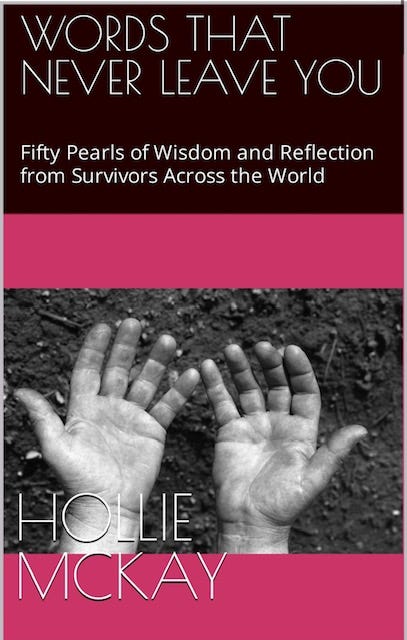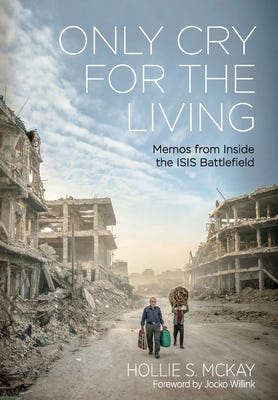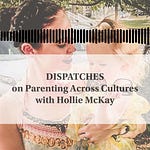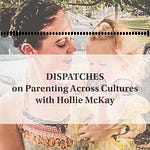TRANSCRIPT
Welcome to the World of War, Crimes and Crises with Hollie McKay. I am Hollie McKay. I am illuminating World Press Freedom Day, which is today, Wednesday, May the Third.
To raise awareness and encourage governments to respect the free flow of information, and in light of journalists being constantly assaulted and press freedoms eroded around the globe, the United Nations established World Press Freedom Day thirty years ago.
Three decades on, and there doesn’t seem too much to celebrate. Last year, 67 journalists and media workers were killed, according to the Committee to Protect Journalists. That marks a 50% jump from the year before. In addition, journalists have been detained in about 30 countries, with the most egregious jailers being Iran, China, Burma and Turkey, followed by Vietnam, Belarus, Saudi Arabia, and Egypt. So on the global front, it’s pretty dismal.
On that note, I can certainly attest to the notion that often the bravest and most defiant journalists and not necessarily the ones standing in the middle of falling bombs, even though that is incredibly heroic work that I see time and time again as a war reporter. To me, some of the bravest journalists are the ones that are going against their own government’s iron fist. Whether in Iran or China, journalists standing up to these incredibly oppressive dictatorships are absolute heroes in my book. Or take Mexico. Mexico is the number one most dangerous place to work as a journalist – right here on our border – because of the cartel threat. I have such massive respect for journalists in Mexico, and Mexican journalists rarely get the acknowledgement they deserve.
Now, let’s look at things on a domestic front. According to a Pew Research Center survey, most journalists in the United States are concerned about the future of press freedoms in our country due to government rule and fake news.
I think a little differently than most of my peers on this subject. I disagree that “fake news” is the number one press threat we should focus on. I think the overarching monopoly of media is a much more chilling problem.
As much as I think social media has created this often frightening bombardment that journalists experience, I’ve certainly endured that in the past, when we do a controversial story, we have to understand going into it that we will get considerable pushback. There will be people who want to come after you, threaten you, and want to sue you. That is an unfortunate extension of intense, crucial investigative work.
Still, when I look at the US compared to most countries in the world, I feel grateful to work here. However, I think of myself more as a writer and journalist these days. I’m out of that daily grind, the corporate fold. (And that’s my choice, and we’ll get to that in a minute.) Nevertheless, part of my decision to take a different career trajectory, even though I still love storytelling, was the need to remove myself from the corporate environment, which I found to be incredibly toxic on a personal level.
Furthermore, the real threat to press freedom in this country I found during that time is the consortium of outside interests. I don’t think I need to review the major companies, because we know who and what they are and the audiences they cater to. Basically, major media companies control the central narrative of what we hear and see day after day, week after week. (I will preface by stressing not everyone/every outlet falls into this category, but the outliers seem to be less and less as time goes on.)
At the same time, the smaller outlets are folding, and even local news is going under as eyeballs turn to the entertainment factor of cable news or a Netflix documentary. It’s tough to keep afloat in this day and age. The advertising models of the 90s and the first decade of the 2000s no longer work in the digital age. So it’s a distinct track of information that we’re getting without even knowing it.
And even though I always felt while in the corporate sphere that I had free rein to write about the things I wanted to, induced by the concept drilled into me from my early journalism days that you always had to have multiple sources and must get as many sides to a particular story as possible; you aren’t ever really free. Outlets approve stories based on what they know their audience will like. So, if you’re working for a media outlet that is more left-leaning, you’re probably not going to do too well pitching a story that might be pro-Second Amendment. And precisely the same applies if you have an audience that is more right-leaning – they’re probably not going to want a story about the pro-choice movement or a topic that generally goes against what that audience tends to gravitate to.
In a corporate setting, advertisers also quietly control the story selection and narrative, especially in television which generally relies much more on advertisers than digital . You’ve got Big Pharma, and you’ve got the fast-food industry; again, it comes down to conglomerates. They have an unspoken say in how stories are portrayed, or if an account goes against them, they can obviously threaten millions of dollars in advertising, which no company wants. Thus, nothing is ever without consequence. In taking pay checks, we aren’t ever truly free.
Moreover, a massive part of diminishing press freedom in our country is not induced by the government per se as it is in many countries, but by the self-censorship of media organizations and journalists themselves. That is a glaring threat rarely spoken about. For example, how many mainstream media outlets in 2020 were willing to dutifully explore the possibility that COVID originated in a lab rather than a wet market? Not many. (Nevermind that many US government agencies now consider this a high probability.) That was a choice, and Big Tech amplified the self-censorship by labeling anyone who dared go there as a carrier of “fake news.”
From my lens, it is that sense of self-censorship that is at the core of a dying industry. On the flipside of advertiser’s footing the bill, the paywall model is also problematic. Most outlets now rely heavily on paid subscribers. It might keep a newspaper or digital publication alive, but it is also driving the lack of diverse thinking in our society. The economic reality of our times is that we can only subscribe to so many outlets a month without breaking the bank. Thus, we have to be selective in our choices. So, if you’re only going to subscribe to one or two of these outlets a month, you’re probably going to subscribe to ones in which you already adhere to that ideology. That is a big problem. Big Tech algorithms only amplify this notion of one-track thinking.
That brings me to my last point on World Press Freedom Day, and that is the state of independent journalism today.
I’ve been in this work-for-yourself arena for two and a half years, and I’ve learned a lot in that time. I was lucky enough that when I started freelance, I happened to be in Afghanistan when it fell. I was one of the only American journalists to actually stay after that fall, so I could set my boundaries and rates a little higher than I think I would have been able to do otherwise, as the story was in such high demand. And then I was in Ukraine prior to and in the immediate aftermath of the Russian invasion. There was also huge interest in that cataclysmic story, so I could thrive in the independent world for some time.
Since then, I’ve had a lot of time to reflect upon where I’m at as a journalist and a writer. I do think that it’s incredibly hard to make a living doing this. But, nevertheless, I love independent writing and investigation. I love being able to wake up every day and listen to what people want to know about, and explore things that I wouldn’t have done otherwise. Yet, I think the reality is that unless you have millions of followers on Twitter and are perhaps already coming from a big platform, it is hard to slice through the noise and survive as a small voice in a large pool of stimulation and screaming.
Even avenues like Substack, of which I poured my heart and soul into the last couple of months, are not sustainable for most writers as a central source of revenue given that most newsletters in the grand scheme (unless it’s a big name) have very few paid subscribers.
It becomes an equation of whether you can keep giving your time to something that you might love just as I do, weighed against the reality of supporting a family and making ends meet, which are crucial factors I (and many others) have to consider. So, that’s something I’m grappling with a lot now. That’s the from-the-heart review. And that reflection of unsustainability applies to the freelance world, with even major outlets routinely claiming they don’t have the budgets to pay freelancers anymore. Often, you can break down the number of hours spent on an article (not even factoring in the danger of war reporting as is in my case) and you wind up working for a few cents an hour. In any other industry, that would be considered illegal.
Again, there are outlets that are the exception to the rule and still pay decent freelance rates, but they are becoming fewer. The shining old days are long gone. Still, every outlet proclaims to be the bearer of truth, yet the truth often requires resources, a budget and time, all commodities that much of mainstream media no longer wants to devote to a story when they know they can make money much faster via aggregation and clickbait.
Overall, my assessment is relatively bleak. But I wanted to be honest, as I often get asked these questions, especially by young journalists trying to break into the industry. In my opinion, the most significant threat to press freedom in our country is not from the outside: it is from inside the media industry itself, which has morphed into its own cash-strapped, factory-driven, self-censored monster.
PLEASE CONSIDER A PAID SUBSCRIPTION TO THIS SUBSTACK TO HELP KEEP INDEPENDENT WRITING AND JOURNALISM ALIVE. THANK YOU SO MUCH FOR YOUR SUPPORT.
For speaking queries please contact meta@metaspeakers.org
Follow me on Instagram and Twitter for more updates
HOLLIE’S BOOKS (please leave a review)
** Short read of meaningful lessons gleaned from the ordinary forced to become extraordinary
Order your copy of “Afghanistan: The End of the US Footprint and the Rise of the Taliban Rule” out now.
For those interested in learning more about the aftermath of war, please pick up a copy of my book “Only Cry for the Living: Memos from Inside the ISIS Battlefield.”
If you want to support small businesses:


















Share this post